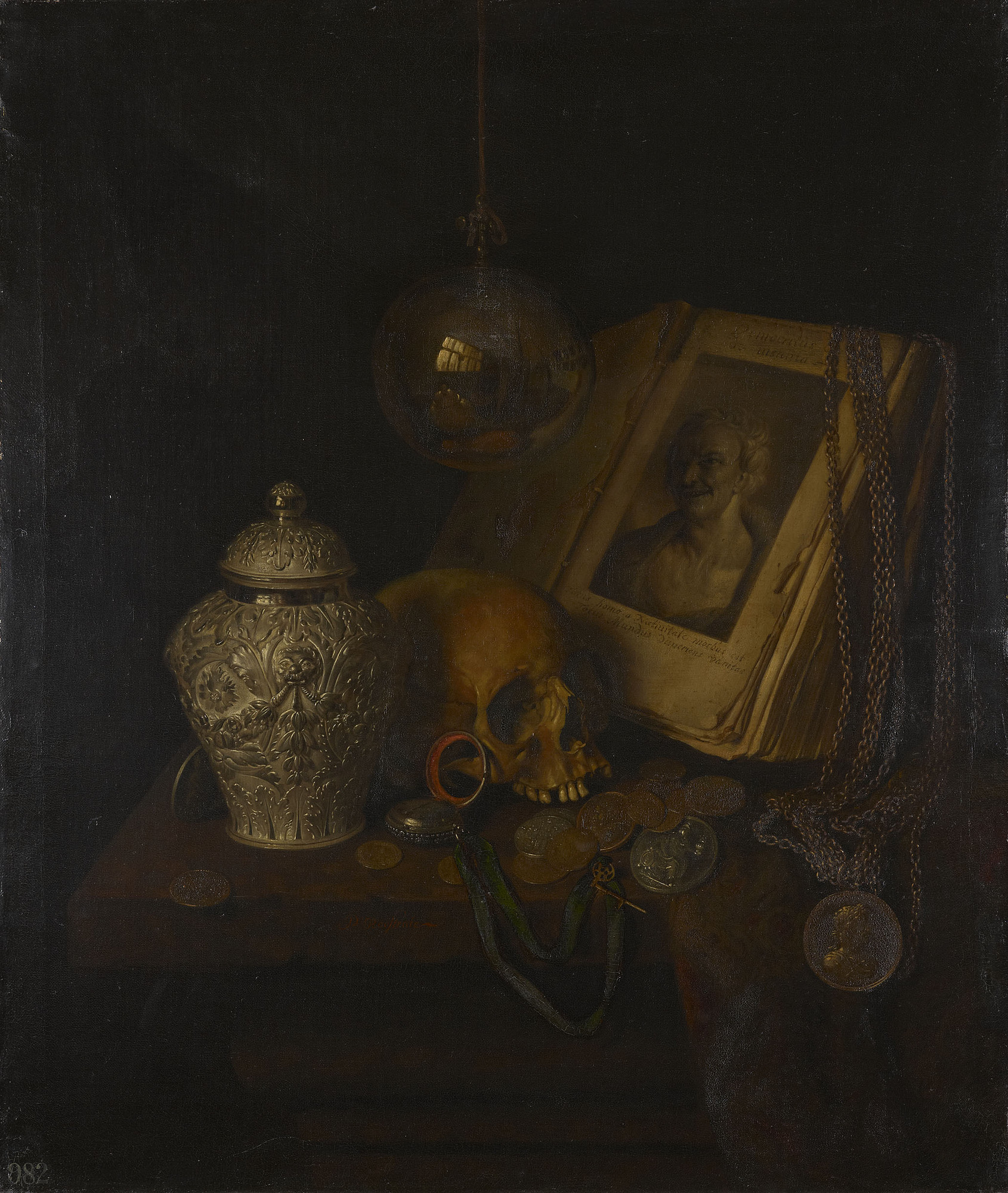
A hidden self-portrait
Recent conservation work on a 17th-century Dutch painting in the Royal Collection, A Vanitas by Pieter Gerritsz. van Roestraten (c.1630–1700) has made visibly clearer a hidden element to the picture – the artist's self-portrait.
A vanitas painting was a type of still life that conveyed a message about the misguided pursuit of transient earthly pleasures and was particularly popular in the Netherlands during the 17th century. This example by Roestraten shows a number of objects displayed on a chest – coins and a silver pocket-watch on a silk ribbon suggest the coveting of worldly possessions, a glass sphere suspended from above signifies the fragility of life, while a human skull serves as a reminder of the inevitability of death. A book is open at a print of a laughing Democritus, the Greek philosopher, which is inscribed with the lines ‘Everyone is sick from birth / vanity is ruining the world’.
During treatment of the painting, the removal of discoloured varnish, revealed the 3cm-high image of the artist at his easel painted as a reflection on the glass sphere. Roestraten can be seen in the surroundings of his studio, looking directly at the viewer and towards the skull and silver ginger jar in the foreground of the picture.


Roestraten was a pupil of the great portrait painter Frans Hals. He established himself as a still-life artist in London, where he is recorded as having been injured in the Great Fire. Best known for his pictures of luxury objects, he clearly enjoyed challenging the viewer to discover a concealed element in his work, as reflected self-portraits have been identified in at least nine of his still-life paintings.
The practice of artists incorporating their own image into their work through such subtle means or by casting themselves as characters in biblical and historical narratives is not uncommon. In Sebastiano Ricci's Christ Among the Doctors in the Temple (c.1711–16) the artist appears in the role of a doctor holding a magnifying glass, while in Judith with the Head of Holofernes (1613), the painter Cristofano Allori plays a central part in the narrative as the decapitated Holofernes.
The exhibition opened at The Queen's Gallery, Buckingham Palace on 4 November 2016.







